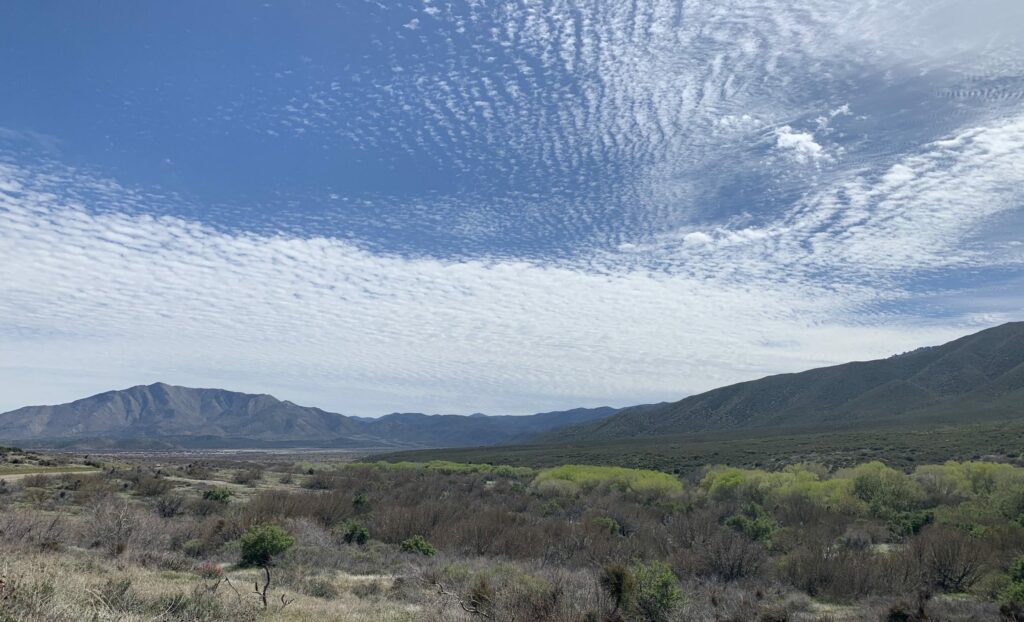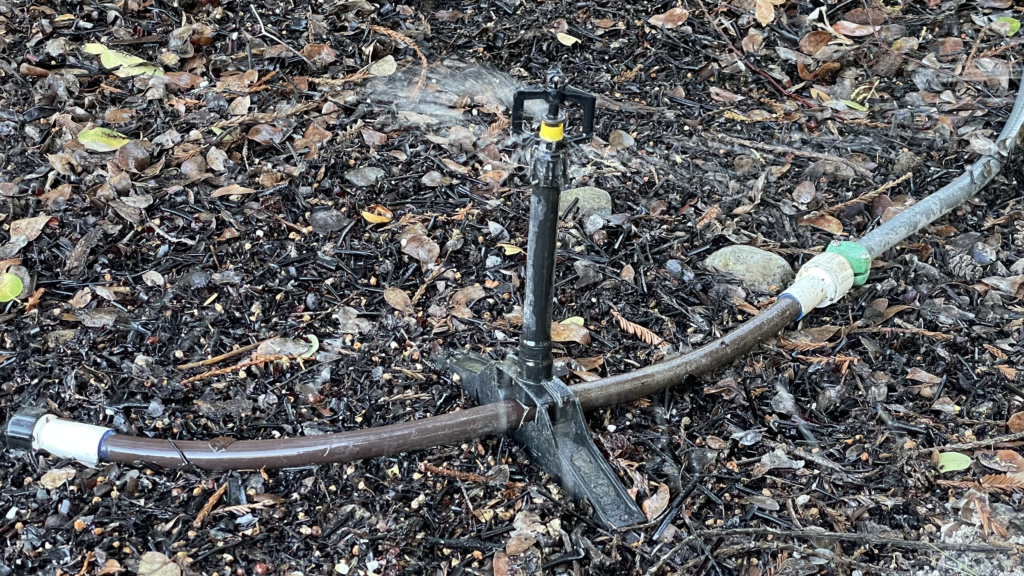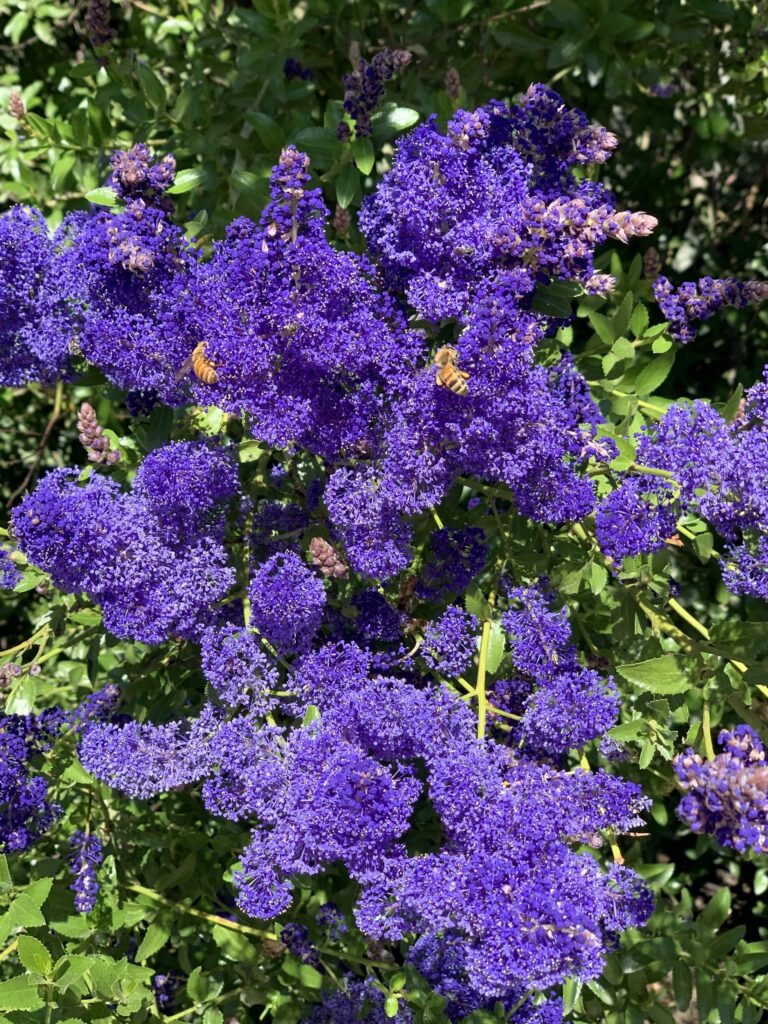April in the Natural Garden 2021
- Posted in: Blog, Monthly Garden Advice
- Tags Seasonal Gardening

The swallows, normally a few days early, but never this late (Swallows Day in San Juan Capistrano is March 19), have not arrived. They pretty much gave up on town and the Mission years ago for lack of mud, insects, peace and quiet, and their other basic needs. As many of you know, they have become a main attraction here at TOLN every year, especially around Casa La Paz, making, occupying, and utilizing their mud-daubed nests under the eaves. If you see them, possibly still south of the border, tell them we miss them.
Current events, history, review, and notes
Finally the news media has run a few articles about drought in wesern North America. Our winter rains were scant, temperatures were high, and on many days we had drying winds. So not only is the ground thirsty for lack of rain locally, but the major southwestern water systems that supply Phoenix, Las Vegas and southern California are already stretched thin, with summer still coming! In southern California, we won’t see much relief this year from northern California, where the rest of our imported water originates. At Tree of Life, we have less than 5.5” total for the year to date, and the date is late, the days getting longer and the typical window for rain is closing fast. We may end up with about one third our average.
Watering
Native plants will do fine through dry winters. They have been “rolling with the punches” nature has thrown at them for millenia. In wild places, they might look a little stressed in the summer after a dry winter, and by design they make it on their own. But in order to keep them looking their best all year in the garden, we employ the “Occasional Deep Soak with Periodic Refreshing Sprinkles Method” as described in our Watering Guide , and in so many other places in Tree of Life’s world of horticultural advice, including September 2020.
Related to Watering:
The goal this year is not so much to augment rainfall but to actually substitute for it. If we end the season with under 6” total rain (highly possible), that will put us behind by the amount in 3, 4, or 5 Deep Soaks, assuming we apply the recommended 1.5-2” sprinkler precipitation each time. We need to put the equivalent of 6-8” of rain into the soil before June just to be on par with a “normal” 12-14” rain year. Even if you have been watering this winter based on advice from this newsletter, (in “normal” winters natural gardens can go with NO supplemental irrigation), your soil may still be lacking the deep moisture required to safely enter the summer months.
We can substitute irrigation for rain as far as the simple quantity of water is concerned, but as far as water quality is concerned, there is no substitute for rain. The pure water, plus the weather conditions during rain events are absolutely perfect. Trying to remember what they’re like.
Watering Spring 2021
While the soil is still cool (spring), and assuming we get very little or no significant rain, you should water your established natural garden every 10 to 14 days with a Deep Soak, through all of April and May, applying a total of 6-8” precipitation in 4-5 irrigation events. Remember, each Deep Soak takes 2-3 days because you are only running the sprinklers 20-30 minutes per day on 2-3 consecutive mornings, thus mimicking a decent rain of 1.5” or so.
The key point is to charge your soil with deep moisture right now. Your plants will then find it at that cool 14-18” depth when they need it the most, this summer.

Pruning
You can tip prune all fast growing branches to encourage bushier side growth. Manzanitas generally need no pruning. If you want to thin them or shape them from the inside, best to wait until fall. Ceanothus are blooming. You can prune off the dry flower/seed heads when they are finished, effectively shaping the plants and readying them for summer. Corrective pruning can be done anytime, as can removal of dead or diseased branches. All shrubs can be shaped long-term through tip pruning this month.
Weeding
Keep on top of this. Winter weeds are wimpy when rains are meager. Summer weeds are right around the corner. See Mulching/Top dress below for another method of seasonal weed control.
Mulching/Top dress
Our video workshop called “The Low Down Dirt on Mulch” is on our YouTube channel. Here’s the link. If you want to apply an imported top dress material before summer, you can do it now through May. Bottom line advice: Organic top dress – chunky mulch, i.e.; redwood 1/2” walk-on bark is best 1-2” thick. Mineral top dress – Decomposed granite or natural aggregate, 1” thick. Leave some patches of bare dirt for the native bees to make their nests. Natural leaf litter under the plants is the goal.
Feeding
Definitely. Especially if you will be watering as recommended above, you can make at least one good application of an all purpose organic fertilizer, or two moderate applications, one in April and one in May. This is the perfect time to fortify your plants, and get your whole garden looking really good so you can share your private paradise with birds, beneficials, pollinators, lizards, frogs and all manner of local wildlife.
Troubleshooting – Varmints, Pests and Diseases
When you see signs or symptoms of disease, or find insects or insect damage in your garden, it helps to start here. Also, please look back at previous posts in this monthly series of Natural Garden essays, or send your questions to gardenhelp@californianativeplants.com .
The key to all garden care issues, including managing disease and injurious plant pests is to create a functional “ecosystem” type garden. This is what sets the natural garden apart from conventional ornamental landscapes. Nature heals and is very resilient as well.
Annual Wildflowers
Spring color is scarce in southern California’s natural landscape, due to the lack of sufficient rain for germination, growth, and flowering. So any “super bloom” you might experience this year will be in your own garden if you sowed seed last fall. And if you have a nice show of flowers, consider collecting seeds later. Some will fall to the ground for next year, but if you collect, clean, catalog, store, and save seed until next fall, you can sow it in a new area. This is a fun activity. If you missed seed sowing last fall, plan on it this year.
Adding New Plants
April is a great month to add new plants, especially since we are recommending so much supplemental irrigation between now and summer. It is safe to plant now. We have an amazing selection and lots of flowers on display. Come on over.

Engage
For over 100 years ecologists, (is that word even 100 years old?) have been debating a controversy or at least pointing out the dilemma of how to define plant communities. Are they tight associations of individual plants fighting it out for position i.e.; “survival of the fittest” or are they loosely organized collections of individual species subject to unpredictable natural forces that cause them to continually change severally and as a whole?
The question: what is the natural relation between the individual and the community.
OK, you can ponder this for a while but don’t strain your brain. John Muir summed it up with a lofty thought, much higher than any definition, plant species, or even the study of “ecology.”
“When we try to pick out anything by itself, we find it hitched to everything else in the Universe.”

The same in your garden. This month as you are marveling over a single ceanothus plant in full bloom, be certain that it is connected to all the plants nearby, plus the butterfly lighting on yonder wildflower, the birds chirping close at hand, the spider you spied in the branches, the lizard lounging on the rock, tonight’s quarter moon, last winter’s cold day hike through a dense stand of ceanothus, the bee on the blossom, the wind that brought the bee, the smooth stones wet in your fountain, the scrub jay that just squawked, all life hidden in the soil, sunrise, for that matter sunset, deep shadows, the top dress you just refreshed, cool shade, the scientific classification of ceanothus, the hummingbird darting by, the sun on your back, dreams of your next day hike, that scrub jay again, now the hummingbird feeding at the dudleya flower stalk, the physiology of flowers… and of course the intricacies of your ceanothus blossom, microscopic detail on grains of pollen, tiny flower parts, a tight cluster of individuals – all miniatures in blue, several clusters on the branch, many branches on the bush, many bushes in your garden. And so on.
There goes that jay again. Just squawk back.
From the April Garden,
Mike Evans
p.s. Makin’ it never felt so good!
p.p.s. And don’t forget to tell the swallows we miss them. They had better have a good excuse. the April Garden,
Mike Evans
Questions? Help is just one call or one email away. Call (949) 728-0685 or email (with pictures if you like) our special helpline: gardenhelp@californianativeplants.com